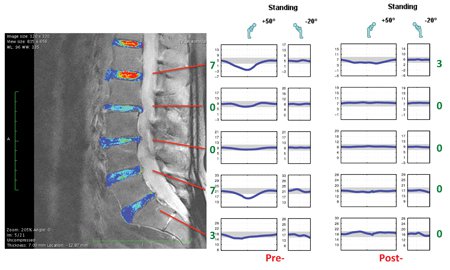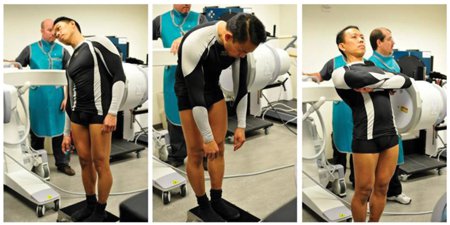Microgravity negatively affects vertebral discs of astronauts during space flight
Researchers, with funding from NASA, are studying the effects of microgravity on vertebral discs during space flight and immediately afterwards.
PHILADELPHIA — During space flight, vertebral discs are unloaded and take on increased water, which can lead to significant back pain during microgravity and disc herniation when astronauts return to earth and experience regular gravity conditions, according to researchers.
Imaging and functional studies that researchers at the University of California at San Francisco and the University of California at San Diego performed show that for astronauts who go into space, increased hydration up to about 13% occurs in some, but not all of their intervertebral discs, Jeffrey C. Lotz, PhD, professor and director of the Bioengineering Lab at the University of California San Francisco, said at a meeting where he presented some of these findings.

Jeffrey C. Lotz
“In gravity our spines normally go through diurnal changes in height and hydration. When we are standing, our spine is vertical and gravity compresses and squeezes water out of our discs. Over the course of the day, our disc heights decrease, the curvature of our spine changes, and our spines become more hypermobile, or flexible. When we sleep, we are horizontal, so the gravity load is removed and our discs rehydrate because of their inherent propensity to take on water and swell. This allows our discs to recover height and stiffness lost from the day before. Without realizing it, we go through this diurnal fluctuation, which is important for maintaining a healthy spine,” Lotz told Spine Surgery Today in an interview.
Diurnal changes in the spine
“The hypothesis is that back pain and disc herniation risk are increased because space flight eliminates these natural diurnal fluctuations. In space, the astronauts’ discs continue to swell and increase in height because gravity is not counteracting their discs’ intrinsic propensity to attract water. Their spines become hyper-inflated, like an over-pressured car tire,” Lotz said.
This makes the spine very stiff. As a consequence, many astronauts who return from space flight are actually about an inch or two taller than when they left because all of the spinal discs take on water and the spinal curvature flattens, he said.
Lotz and colleagues obtained grant funding from NASA to observe and research these spinal changes in 12 crew members who will spend 6 months on the international space station. The study, he told Spine Surgery Today, will likely be completed by 2018.

This shows standing lumbar range of motion changes in the spine at pre-flight and post-flight time points.
Images: Lotz JC

A spinal kinematics test is demonstrated, which is a test that astronauts were subject to in studies Jeffrey C. Lotz, PhD, and colleagues did.
Mars mission application
Results of this work could be applied to crews who are involved in any future long-duration space missions to Mars, for example, Lotz said.
He also discussed the adverse effects of microgravity on the trunk muscles that support spine movement. Atrophied muscles are less able to protect the spine during flexing and bending maneuvers. This, plus the increase in stiffness from swollen discs, can create a double jeopardy for astronauts, Lotz noted.
“So, when crew members return from space they have a very stiff spine, plus atrophied muscles due to less physical activity in space. This represents an imbalance between what we call the passive stiffness — the stiffness of the discs — and the active stiffness, the muscles. Because of this, bending and twisting against gravity may overload spine tissues and cause disc herniation,” Lotz told Spine Surgery Today.
The hope, Lotz said, is these spinal changes can be mapped overtime to improve our understanding of how the spine responds to load.
“The take-home message is that microgravity is a fairly significant exposure that changes the biomechanics and biology of the spine. We will be learning a lot about how these changes may relate to back pain symptoms and disc herniation risk. Hopefully this study will lead to countermeasures that prevent back problems from long-duration space flight and also help develop treatments for people on earth,” Lotz said. – by Robert Linnehan
Reference:
Lotz J. S3.5. Presented at: Philadelphia Spine Research Symposium. Nov. 6-8, 2013; Philadelphia.For more information:
Jeffrey C. Lotz, PhD, can be reached at the UCSF Orthopaedic Bioengineering Laboratory, Box 0514, 513 Parnassus Ave., S-1164, San Francisco, CA 94143; email: jeffrey.lotz@ucsf.edu.Disclosure: The research was supported by grants from NASA.
